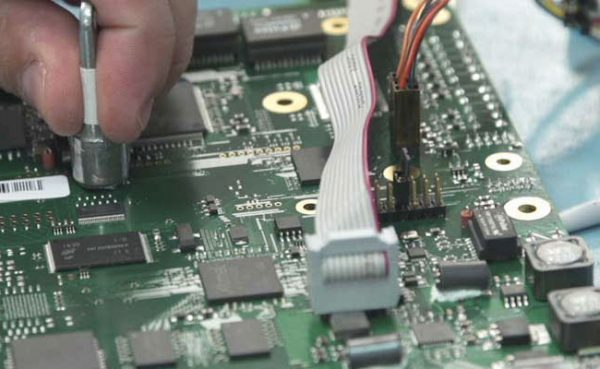
Printed Circuit Board (PCB) prototypes are typically constructed using a variety of materials, each chosen for its specific properties and suitability for the intended application. The choice of materials depends on factors such as cost, performance requirements, and the complexity of the circuit. Here are some commonly used materials in PCB prototypes:

FR-4 (Flame Retardant 4): FR-4 is the most common material for PCBs. It is a glass-reinforced epoxy laminate that provides good electrical insulation and mechanical strength. FR-4 is widely used in a range of applications and is known for its durability.
FR-1, FR-2, FR-3: These are other flame-retardant materials that are similar to FR-4 but with different properties. They are generally less common and may be used in specific applications where cost is a significant consideration.
Metal Core PCBs (MCPCB): In applications where heat dissipation is critical, metal core PCBs are used. The metal core, typically aluminum or copper, helps to dissipate heat more efficiently than traditional FR-4. MCPCBs are often used in high-power LED applications.
Polyimide (PI): Polyimide is a flexible substrate material that can withstand high temperatures. It is commonly used in applications where flexibility and resistance to heat are essential, such as in aerospace and military applications.
Rogers PCBs: Rogers Corporation produces high-performance materials for specialized applications. Rogers PCBs are known for their excellent dielectric properties, high frequency capabilities, and low signal loss. They are commonly used in RF (radio frequency) and microwave applications.
Teflon (PTFE): Teflon is known for its low dielectric constant and loss tangent, making it suitable for high-frequency applications. PTFE-based materials are commonly used in RF and microwave circuits.
Ceramic PCBs: Ceramic materials are used when high thermal conductivity and excellent electrical properties are required. They are often employed in applications where heat dissipation and reliability are critical.
Flexible PCBs (FPCBs): Made from flexible materials like polyimide, flexible PCBs are used in applications where bending or twisting is required. They are commonly found in wearable devices, cameras, and other applications with space constraints.
High-Temperature Laminates: In applications where PCBs are exposed to high temperatures, such as in automotive or industrial settings, high-temperature laminates may be used to ensure the stability and reliability of the circuit.
It's important to note that the choice of material depends on the specific requirements of the PCB prototype, and the above list is not exhaustive. The selection process involves considering factors like the operating environment, electrical characteristics, cost constraints, and manufacturing capabilities.